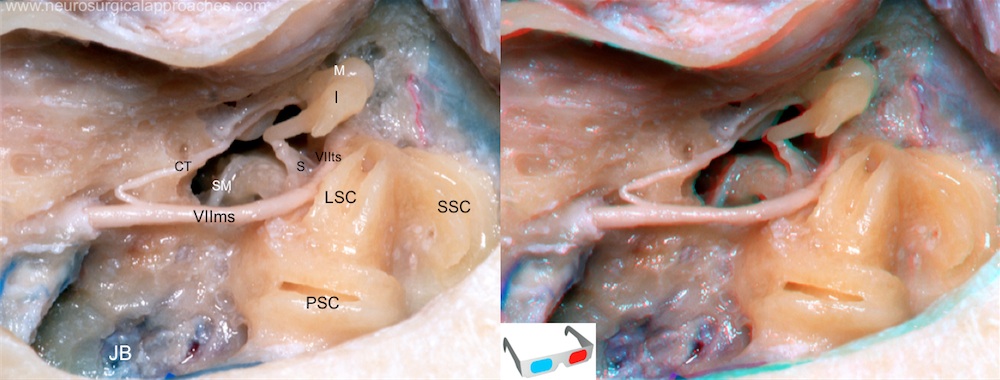Posterior semicircular canal
The posterior semicircular canal is a part of the vestibular system detects rotation of the head around a rostral-caudal (anterior-posterior) axis, or in other words rotation in the coronal plane. This occurs, for example, when you move your head to touch your shoulders, or when doing a cartwheel.
It is directed superiorly, as per its nomenclature, and posteriorly, nearly parallel to the posterior surface of the petrous bone. The vestibular canaliculus is immediately medial to it. It is part of the bony labyrinth and is used by the vestibular system to detect rotations of the head in the sagittal plane. It is the longest of the three canals, measuring from 18 to 22 mm. Its lower or ampullated end opens into the lower and back part of the vestibule, its upper into the crus commune.
CT: Chorda tympani; I: Incus; JB: Jugular bulb; LSC: Lateral semicircular canal; M: Malleus; PSC: Posterior semicircular canal; S: Stapes; SM: Stapedius muscle; SSC: Superior semicircular canal; VIIms: mastoid segment of VII cranial nerve; VIIts: tympanic segment of VII cranial nerve.
